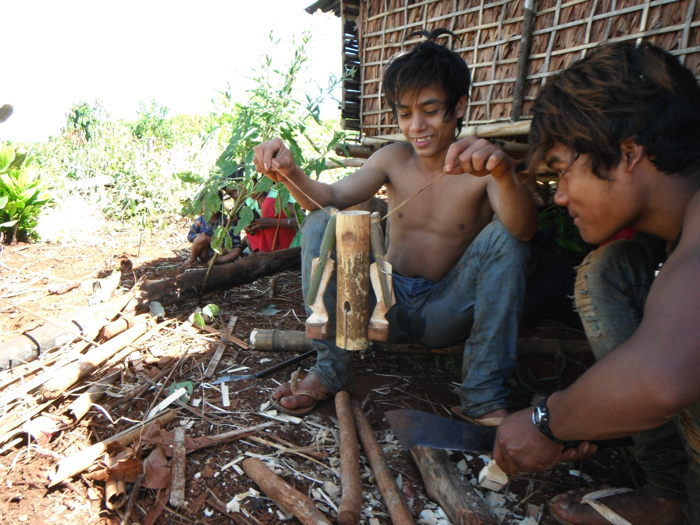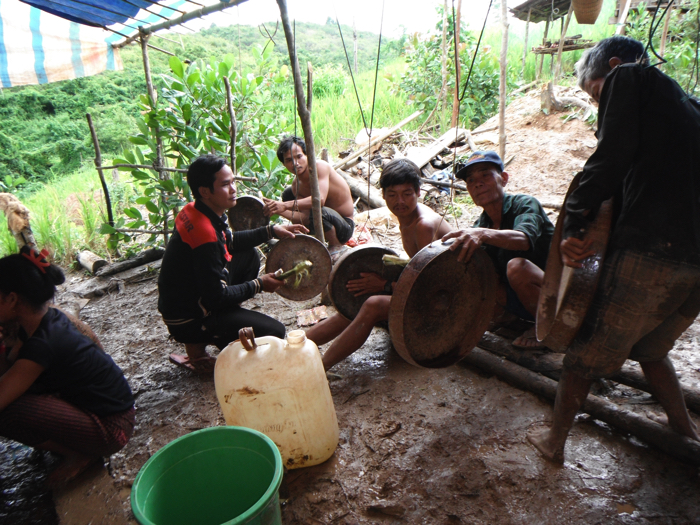- Project Leader : Inoue Ko (National Museum of Ethnology)
Outline of Research
This research aims to understand the correlation between human sensibility and communal life in the cultures and histories of the peoples of the Cambodia-Laos-Vietnam border area. This will be achieved through an examination of the literature published during the last hundred years. The researcher has studied musical and acoustic practices of the Krung people in northeastern Cambodia and is consequently interested in the coexistence of human beings and various other life forms including animals, plants, and spirit beings. This resulted in the idea of rethinking the meaning of community from an aesthetic viewpoint. Although a large number of peoples in the area are called “mountainous peoples,” this denomination should not essentialize any particular sensibility or mode of communal life. Therefore, this research views these subjects from a broader perspective beyond ethnic identities or a mountain–plains distinction.
Description
The purpose of this research is to understand the cultural and historic characteristics of communality of villages in the above-mentioned area, so that the co-existence of human beings with varying attributes and between human beings and other life forms can be better understood.
To describe what the community is, it is necessary to examine objects for which the community members have felt empathy or antipathy. Conventional topics such as social systems, moral standards, and selfrepresentations are matters of secondary importance from this perspective. The community can be described as an ambience of affective; a participatory bearing that encourages the creation of embodied links with immediate neighbors and places. This is what ‘aesthetic’ in the present research means.
The peoples of this area tend to connect personal conflicts and anxieties about health with spirits of natural phenomena, such as forests and water sources, which seems to imply affective relationships with the ecological environment. These anthropomorphized agencies and dynamics can also be seen as the elements constituting their communities. Although this kind of sensibility is changing, this research focuses on uncovering its historical foundations, rather than on their current status or future prospects.
This bibliographic research has two primary aims. The first aim is to discover the common ground between the aesthetic perspective of this research and contemporary perspectives on the history of the area. It is particularly important to examine the discussions concerning the mountainous peoples after the impact of J. Scott’s (2009) concept of Zomia. The second aim is to explore literature to find descriptions and indications of correlations between human sensibility and communal life. Whether the mountainous people or the plains people are featured, obtaining rich descriptions of these peoples’ worldviews, especially animistic ones, from the French colonial era to the present day, is of great importance. Considering the amount of literature to be reviewed, the achievable goal within a 12-month period must be limited to discovering the whereabouts of descriptions worth investigating in detail.
The notion of animism as well as the dichotomy between mountainous and plains peoples has to be re-examined from the perspective of the embodied relationships between humans and the environment that could have been constructed in cultural, historic, and contingent circumstances. This re-examination will foster a broader understanding of the correlation between human sensibility and communal life.
 Boys making a cowbell (Ratanakiri Province, Cambodia, 2014) |
 Playing gongs in a ricefield (Ratanakiri Province, Cambodia, 2014) |
